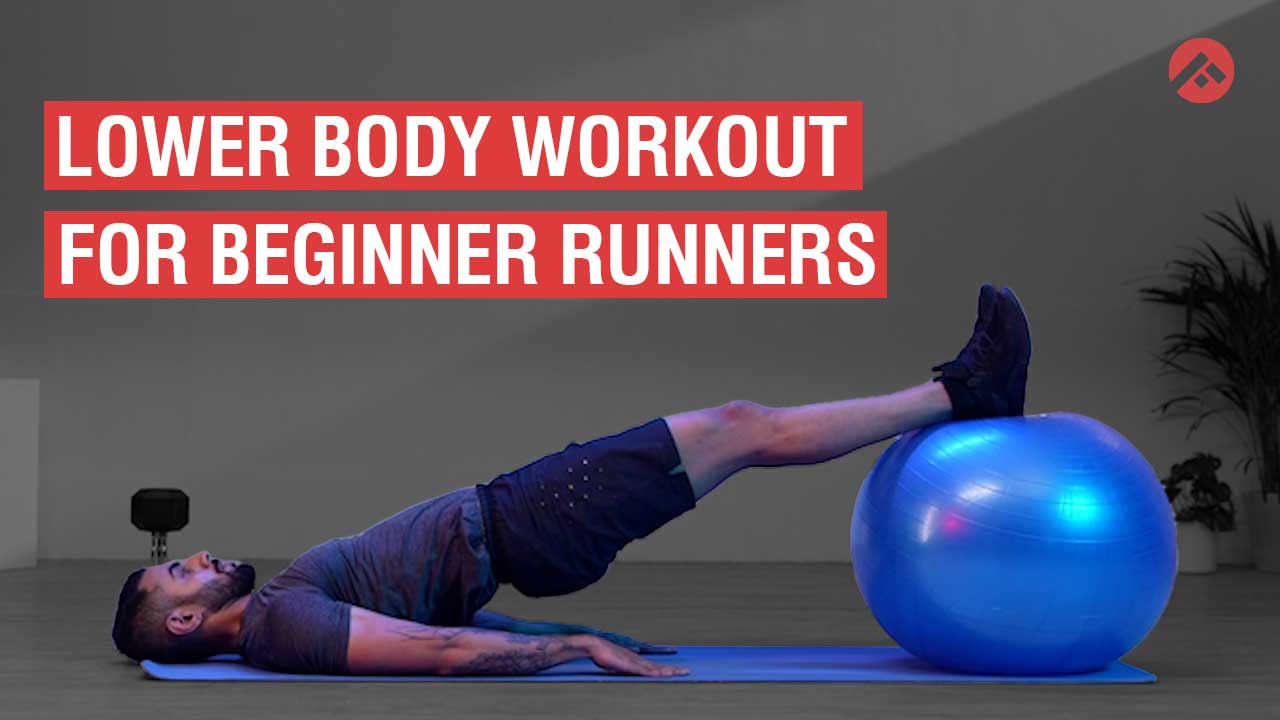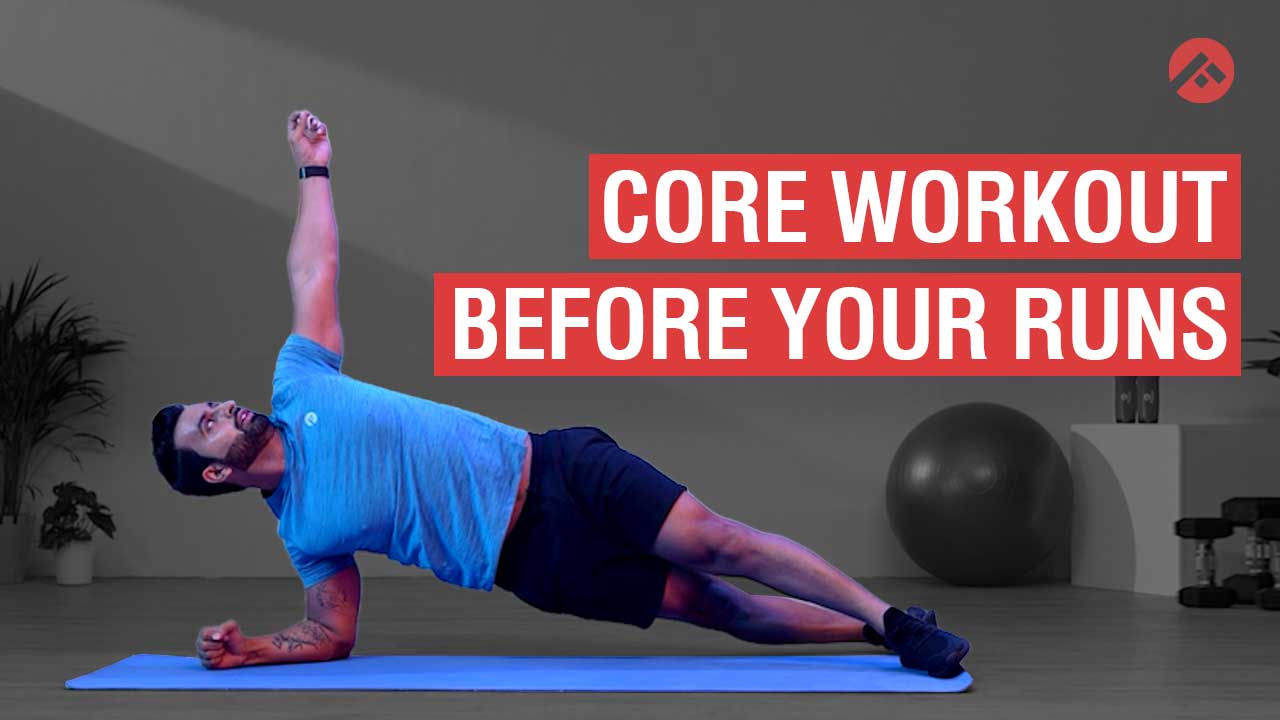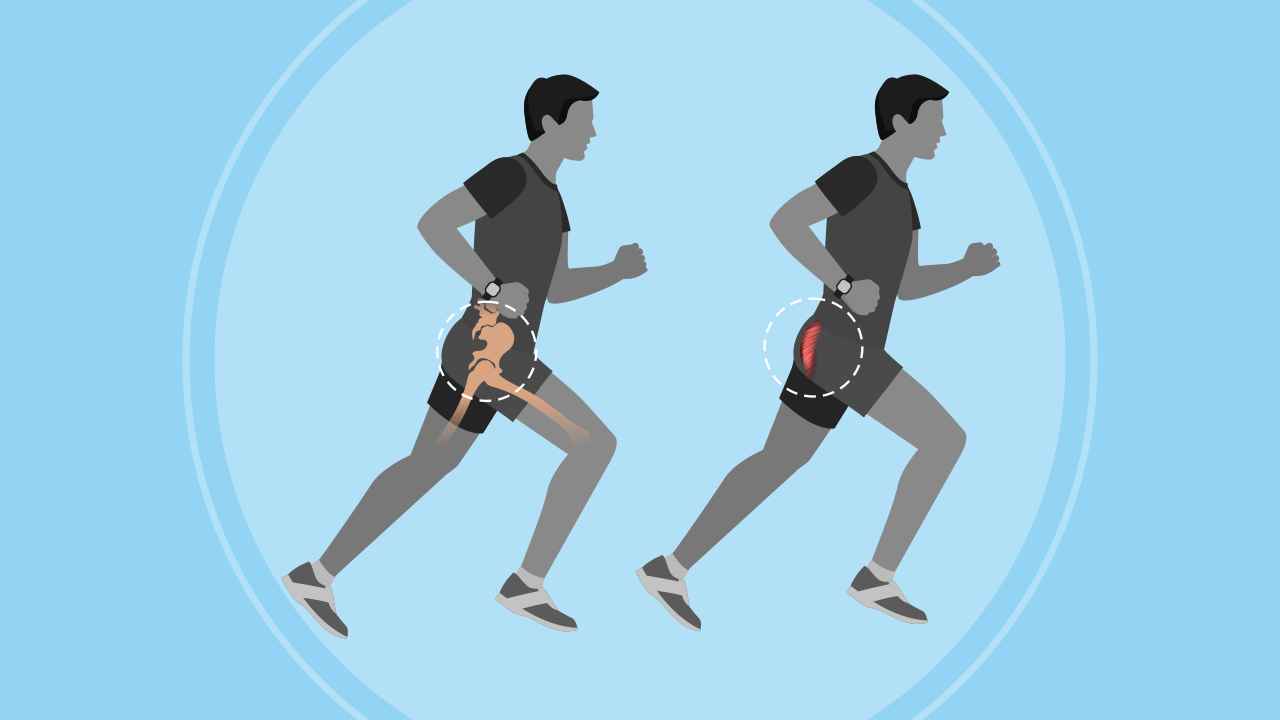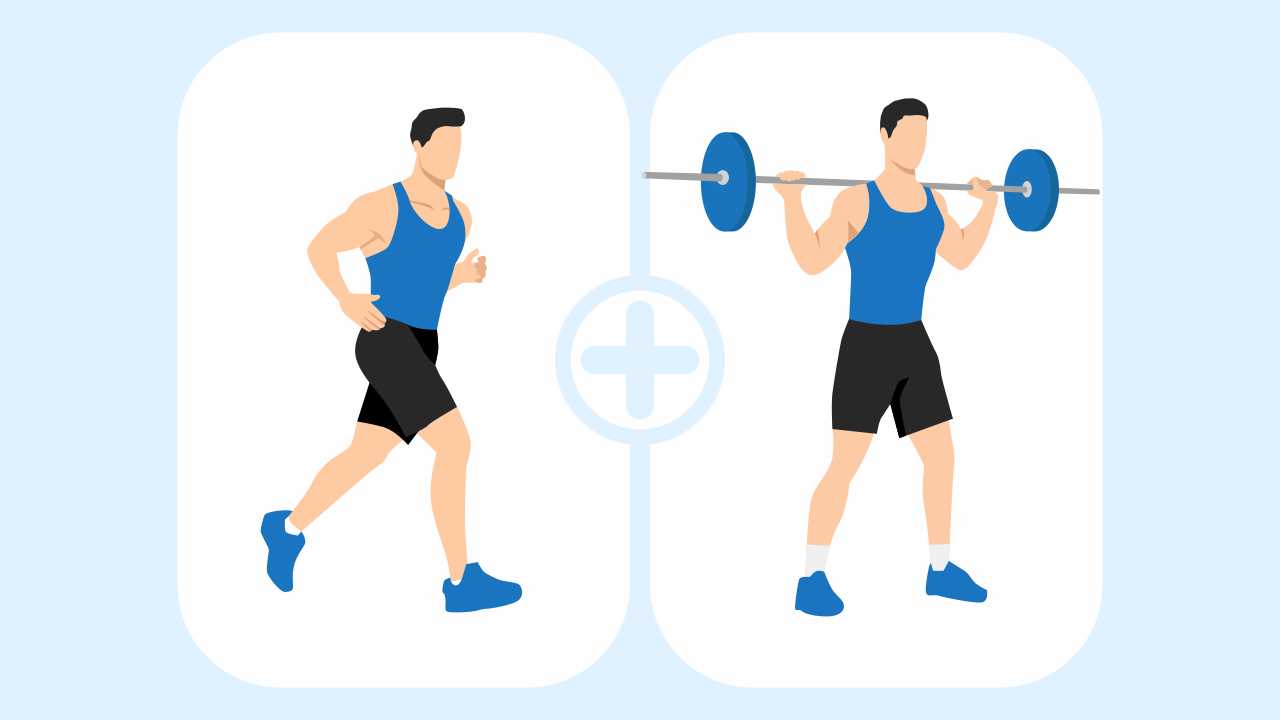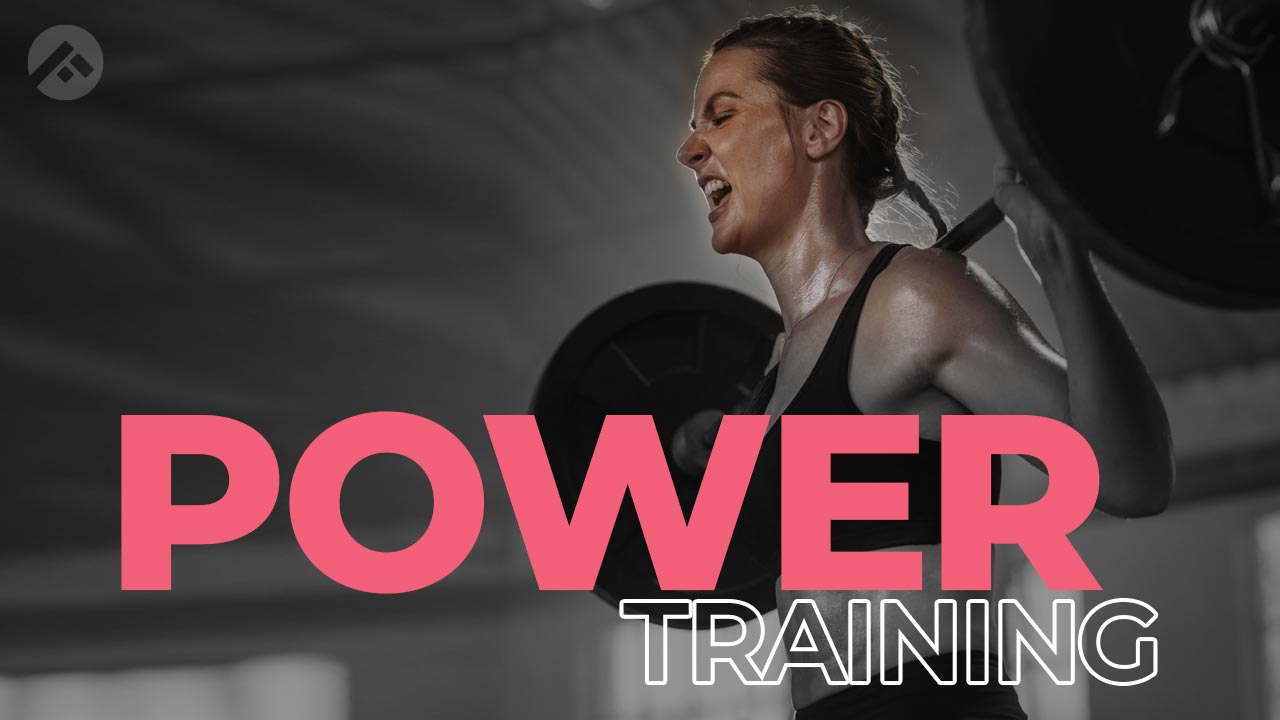
Exercises to Strengthen the Achilles Tendon and Triceps Surae (Calf Muscles)

The muscles that act at the ankle include the two heads of the gastrocnemius muscle. One is the large, visible muscle of the calf that crosses both the knee and ankle joint, and the other is the smaller and deeper soleus muscle, which runs from just below the knee to the ankle joint. Together, these two muscles are known as the triceps surae and are responsible for plantar flexion of the foot, that is, pointing of the toes. The gastrocnemius also acts to flex the knee, while the soleus acts solely at the ankle.
The gastrocnemius and soleus both connect at the Achilles tendon, which is the thickest and strongest tendon in the body, and attaches to the calcaneus, or heel bone. Collectively, this muscle–tendon complex is vital for running, walking, and simply maintaining your balance. For instance, during the running stride, plantar flexion occurs as you explosively push off the toes. The soleus, in particular, bears a lot of the load during running, and is typically very fatigue-resistant. Meanwhile, the Achilles tendon functions to transmit that power from the calf muscles to the heel of the foot.
Also watch: Can You Stiffen the Achilles Tendon to Run Faster?

Injuries in the lower leg and ankle
The name of the Achilles tendon comes from Greek mythology, where the hero Achilles was immune to injury over his entire body except for his heel, which was pierced by an arrow and led to his downfall. Tightness, weakness, and muscular imbalance in the triceps surae and Achilles tendon can play a role in various common injuries among runners and may lead to the downfall of many athletes.
For example, shin splints or exercise-related pain in the front of the lower leg are often associated with tightness in the Achilles tendon. On the other hand, plantar fasciitis, a painful condition of the foot that is most common among overweight runners, can be related to tightness in the gastrocnemius and soleus muscles.
The most common concern among runners is Achilles tendinitis, which is also sometimes called Achilles tendinopathy and involves pain, swelling, and reduced function. Many potential factors, including fitness-related aspects such as poor foot mechanics, overtraining, improper or worn-out footwear, improper training surfaces, and an overall lack of strength and flexibility in the lower-leg muscles are related to Achilles tendinitis.
In addition, older age, increased body weight, and common structural factors in the lower body such as flat feet, high arches, leg-length discrepancies, and lateral instability in the ankles can make you more prone to this type of injury. Considering running mechanics specifically, individuals with this condition tend to have reduced or delayed muscle activity of the gluteal muscles, rectus femoris, peroneus longus, and gastrocnemius during different phases of the gait cycle, which may result in:
- Altered joint position of the hips, knees, ankles, and feet
- Uneven ground reaction forces
- Increased loads placed on the joints throughout the lower limb
If you experience pain and/or tightness in the calf or Achilles tendon during or after your runs, it may be a good idea to have a physical therapist or physiotherapist assess the cause. These professionals can determine if your issues are the result of weakness or tightness and help you improve your running gait and biomechanics, so that you can avoid injury and improve your performance.
Exercises to strengthen the triceps surae and Achilles tendon
1. Glute bridge with heel lift
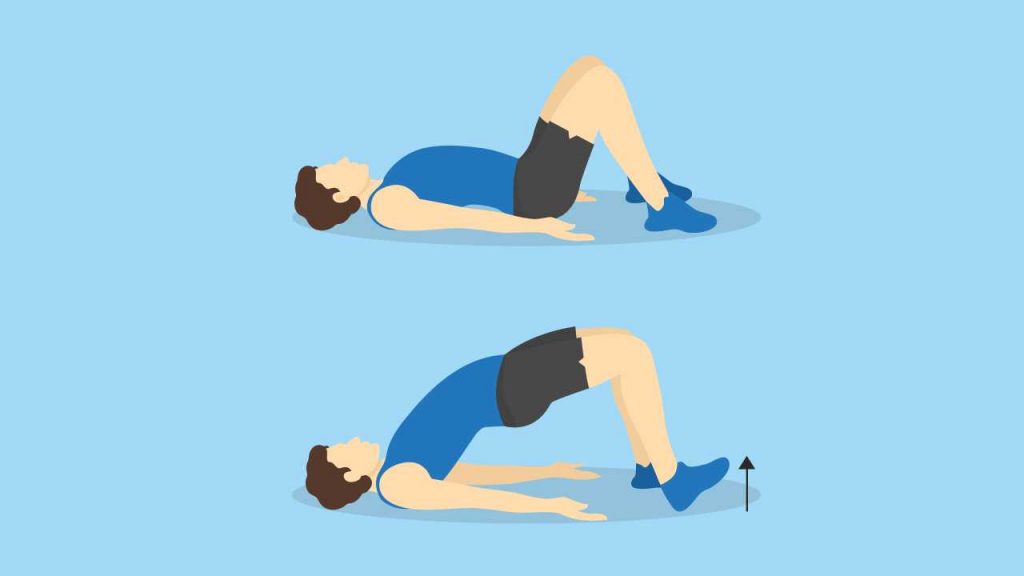
- Lie on your back with your knees bent and feet up on a step or BOSU trainer.
- Lift your backside off the floor to perform the glute bridge, then, while holding the bridge, lower and lift the heels to stretch and strengthen the triceps surae.
- Perform this exercise for two or three sets of 12 repetitions.
- Progress this exercise by straightening one leg and performing the heel raise with one leg at a time.
2. Lunge with heel lift
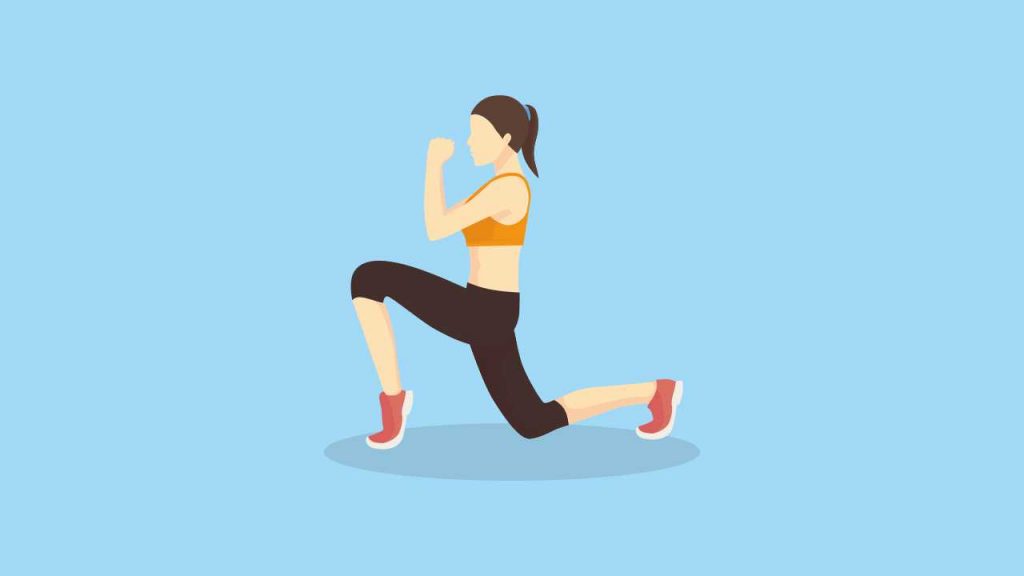
- Do a forward lunge. Before rising back into the starting position, perform a heel lift with the front foot at each repetition.
- Do this exercise for two or three sets of 12 repetitions per leg.
3. Calf raises
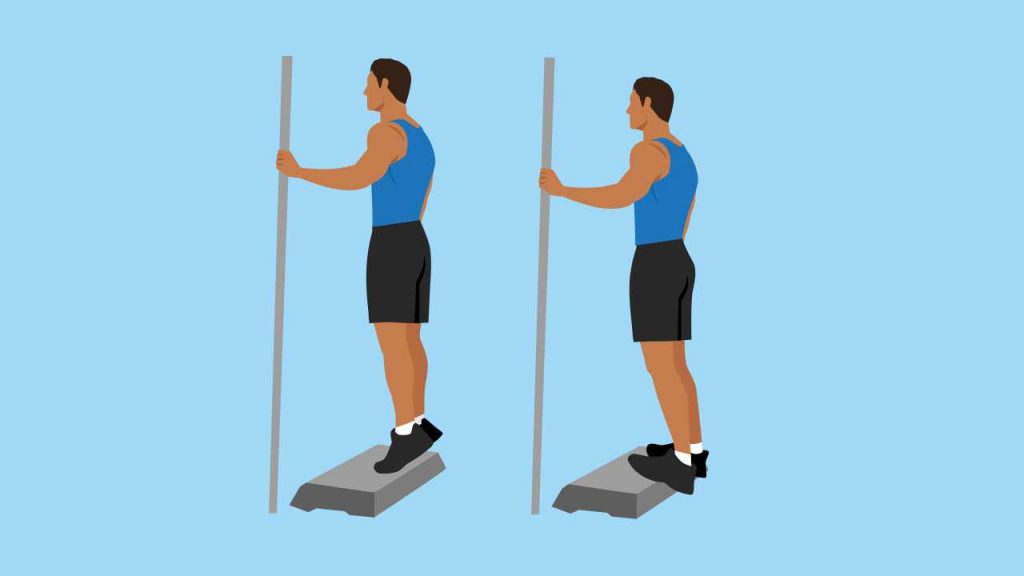
You may do calf raises with a straight knee to target the gastrocnemius or a bent knee to target the soleus. To do this workout, you need to:
- Stand with your feet on the ground and lift your heels off the floor. You may perform this exercise on a step to extend the range of motion and allow for a stretch as you lower the heel toward the floor before performing the calf raise.
- Do this workout with bodyweight or an external load in a standing or seated position (using a leg press machine), one leg at a time. If you wish to perform this exercise while standing, then external support such as a bar, wall, or exercise machine may be helpful to hold on to for balance.
- Perform two to three sets of 12 repetitions.
- Progress this exercise by increasing external resistance, adjusting the number of repetitions performed, or increasing the range of motion.
4. Ankle jumps
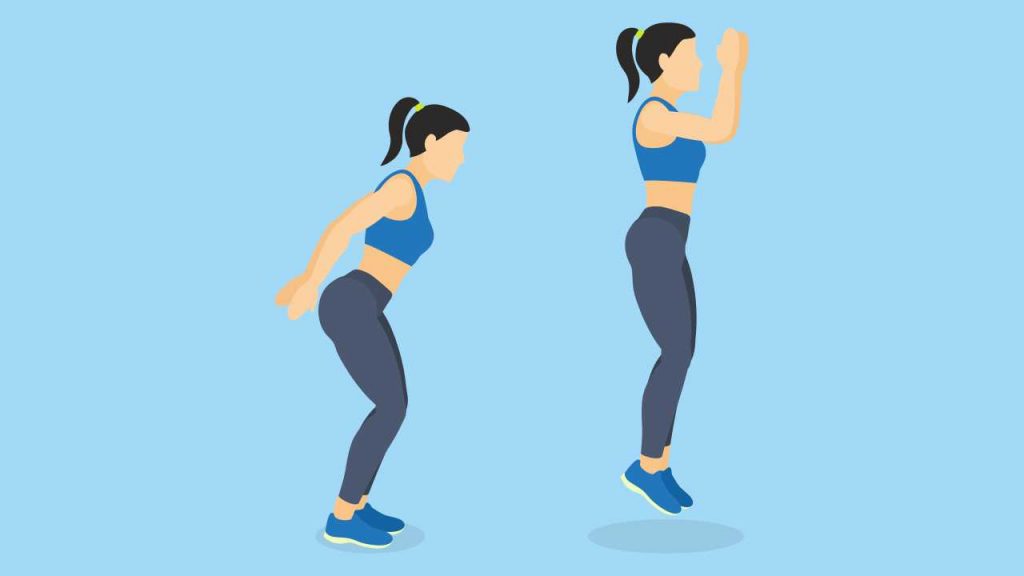
This exercise will improve power in the triceps surae, which will increase your running speed in addition to warding off injury. Ankle jumps add speed and power to the calf raise exercise. To do ankle jumps you need to:
- Stand with your feet apart and slightly bend your knees. Jump vertically as high as you can, land on the balls of your feet, and repeat.
- Focus your efforts on your ankles and lower leg rather than on your knees and thigh muscles.
- Imagine setting off with great force (exploding off the ground) and landing softly (like a feather). Because injuries of the Achilles tendon can be related to overuse, it is important to integrate this exercise as part of your dynamic warm-up or perform it on days when your running volume is low.
- Perform this exercise for two or three sets of 12 repetitions or 20-30 seconds per set.
5. Uphill walking

This exercise will strengthen your calves. While doing this exercise, make sure you lower your heel to the ground with each step. Then, move upwards, and with the help of your toes, maximize the focus on the calves.
Exercises to stretch the triceps surae and Achilles tendon and steps to do them
1. Stair stretch
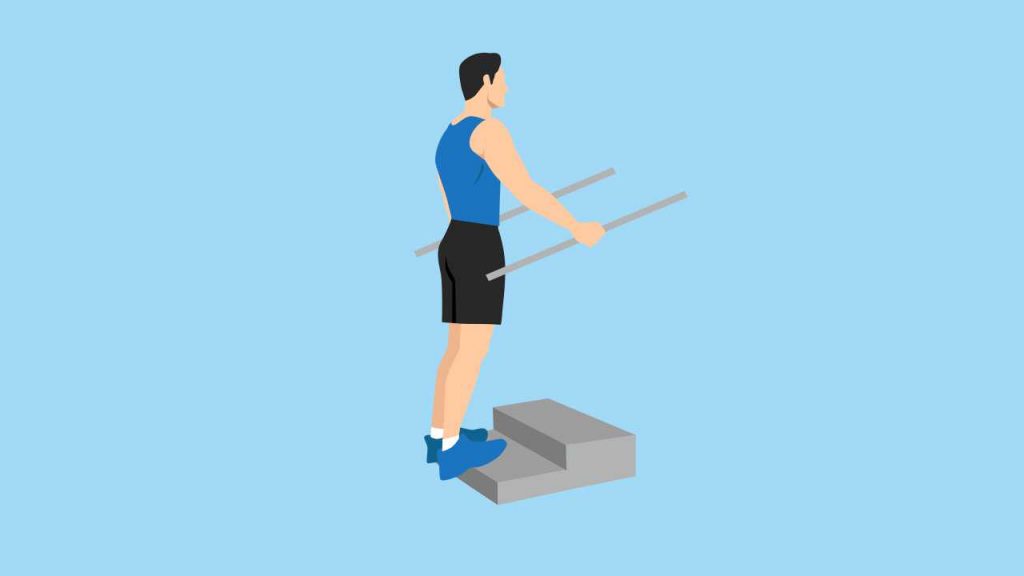
- Stand on a stair with both feet and hold onto a wall or handrail as needed for balance. Move one foot back, so the ball of the foot is supported on the step and the heel is hanging off.
- Keep the knee bent throughout the movement to focus this stretch on the soleus or straighten it to target the gastrocnemius. Hinge at the hips and drive your weight back and down as you lower the heel toward the floor.
2. Wall stretch

- Start by placing your foot on a wall in a way that your forefoot and toes are up on the wall.
- Ensure that your heel is on the ground and it is as close to the wall as possible.
- Place both hands on the wall and lean forward to gently stretch the triceps surae.
3. Standing calf stretch
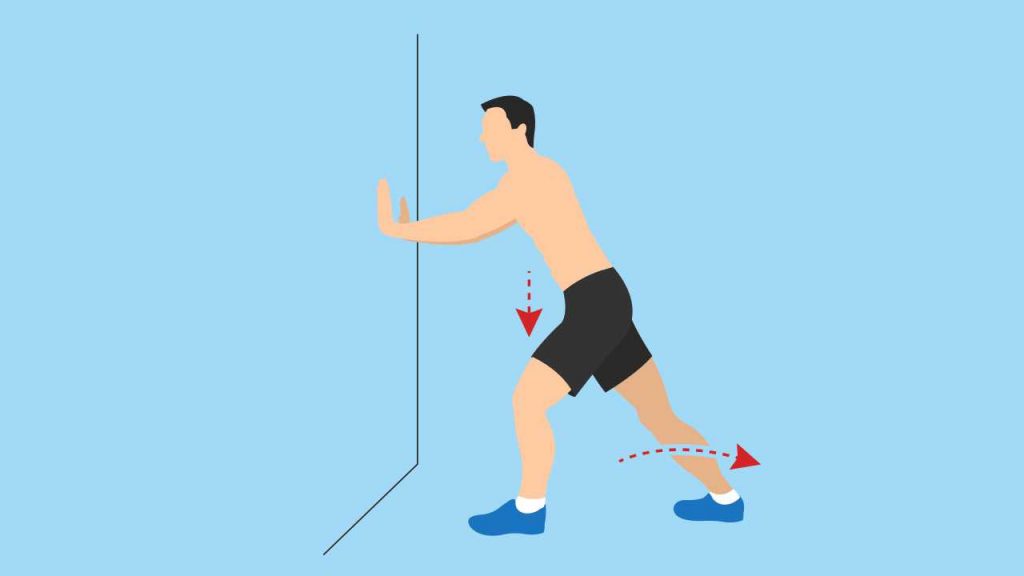
- Stand facing a wall, with the toes of your left foot touching the wall, and your hands flat against the wall.
- Stretch the rear leg by moving forward while keeping the heel on the ground. Target the gastrocnemius by keeping the leg straight or target the soleus by bending the leg.
- Switch legs and repeat. You can modify this exercise by standing on a step with the heel of the back leg hanging off the step to increase the range of motion.
4. Seated calf stretch with strap
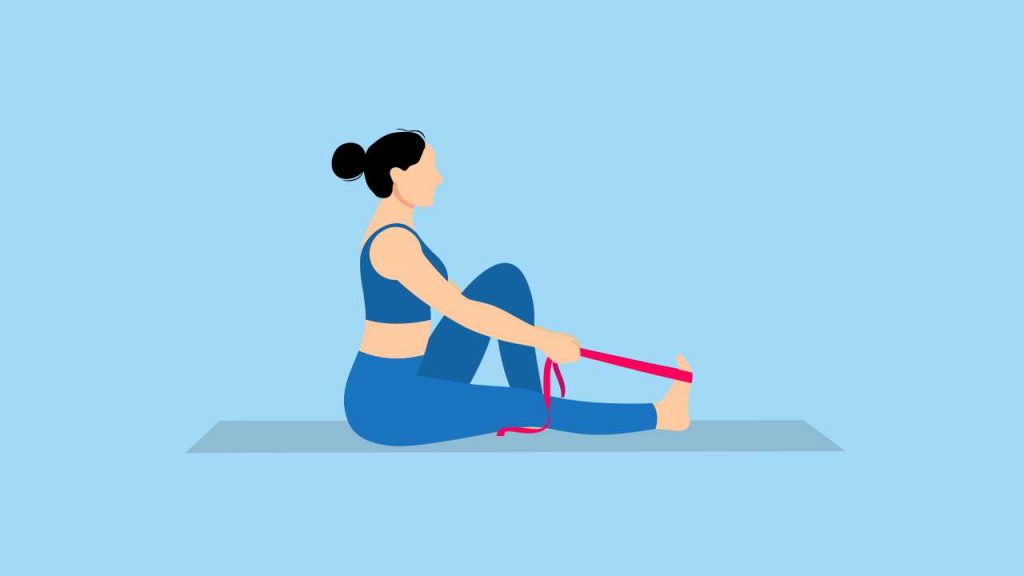
- Sit on the ground with your one leg straight and your other leg bent.
- Loop a non-elastic strap or towel around your one foot wherein the leg is straight and gently pull the toes toward you. Switch legs and repeat.
Perform each of these stretches at least twice or thrice per week. Hold each stretch for 10 to 30 seconds and repeat for a total of 60 seconds per side for each stretch. Stretch to the point of feeling tightness or slight discomfort after the muscles are warmed through light-to-moderate aerobic activity.
Incorporating these exercises into a runner’s training regimen can help improve the function of the musculature that supports the ankle joint to improve posture, running mechanics, and muscular balance. Moreover, these workouts reduce the risk of musculoskeletal injuries related to muscular imbalances and kinetic chain immobility.
Also read: Exercises That Runners Can Perform to Build Strong Hips
You may add these workouts to your existing exercise routine or they can be a standalone workout regime that you may follow on recovery or low-volume training days. You may also include these exercises as a part of your warm-up or cool-down before or after a run. No matter how you decide to incorporate these exercises, begin with the recommended times, set, and repetition schemes.
References
1. American Council on Exercise. Medical Exercise Specialist Manual. San Diego: American Council on Exercise, 2015.
2. Chaudry S, Morrissey D, Woledge RC, et al. Eccentric and concentric exercise of the triceps surae: An in vivo study of dynamic muscle and tendon biomechanical parameters. J Appl Biomech 2015; 31: 69–78.
3. Houglum PA. Therapeutic Exercise for Musculoskeletal Injuries (4th ed) 2020. Cham Ill: Human Kinetics, 2016.
4. Achilles Tendinopathy – Biomechanical Properties. 2021. https://www.physio-pedia.com/Achilles_Tendinopathy_-_Biomechanical_Properties (accessed Nov 22, 2021).


